• Part 1: An Introduction to Italian Wines
• Part 2: The Great Wine Regions of Italy
• Part 3: How to Read Italian Wine Labels
Italian Wine Guide: Everything You Need to Know
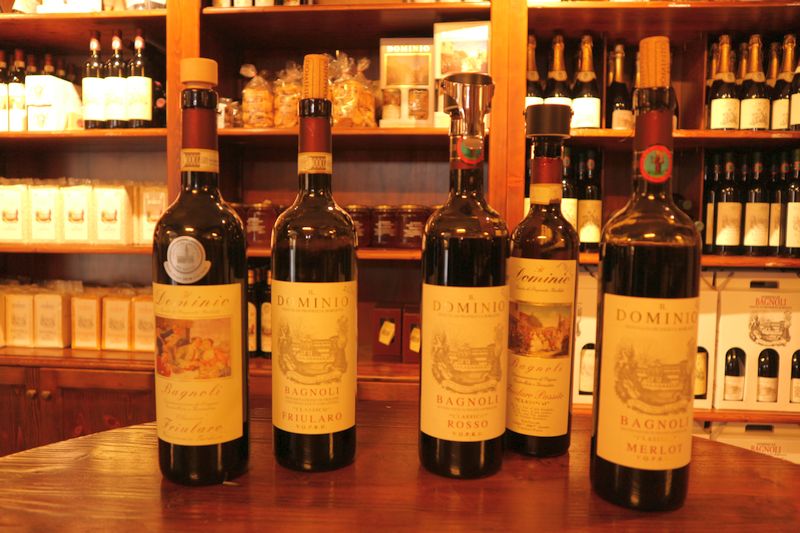
Part 1: An Introduction to Italian Wines
Known for being one of the most stylishly creative countries in the world, it may come to little surprise that Italy has one of the world’s richest variety of individual wine styles, distinctive terroirs and indigenous grape varieties. The country’s best wines have a vivacity, originality, and flair all of their own.
With this, it is of little wonder that the colonizing Ancient Greeks called Italy “Oenotoria” – the land of wine. Approximately one-fifth of the world’s wine comes directly from Italy’s vineyards; there are over one million throughout the entire country. Whereas beer has dominated the drinking scene in England, fermented drinks including gin and whisky have played an important role in Scotland’s economic and social foundations, where a natural resource of peat and oak have allowed the drink to be smoked and matured – adding to their flavour and character.
The ancient Romans began organizing vineyards in the 2nd century BC, after defeating the Carthaginians. Shortly thereafter, the Romans provided technological advancements in barrel-making and bottling; wine was clearly on their minds. At the time, Italy was using much of its coastline to host wine-making plantations run by slaves, and wine-making became so popular that Italy was running out of land for other agricultural purposes. In AD 92, Emperor Domitian ordered that some of the plantations close in order to provide land for food production. Italians were so proud of their wine that the Romans prohibited any other provinces from producing it. Not until many years later did the Roman Empire relax its laws, allowing the rest of Europe to produce wine.
Even today, there is very little of Italy that is not, at least marginally, wine country. In terms of geography, Italy cannot fail to produce good wine in great variety as well-exposed slopes, sunshine and a temperate climate are considered the essentials to producing great wines. The country’s peculiar physique, that of a long spine of mountains reaching south from the shelter of the Alps almost to North Africa, means there can hardly be a more desirable combination of altitude, latitude, and exposure for vines to grow on. Many of the country’s soils are volcanic; much is limestone and there is a plentiful supply of gravelly clay. However, even with such variety, generalisation seems futile. If there is anything lacking, it is order.
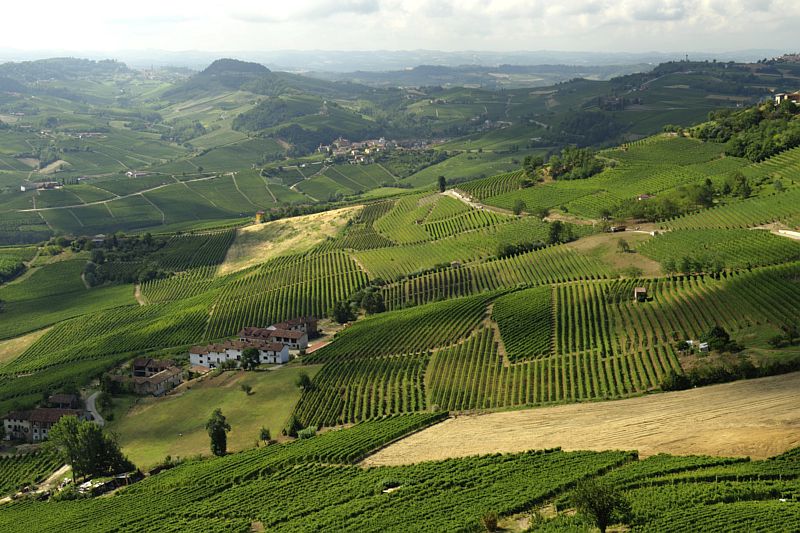
One of the most difficult wine producers to fully understand, Italy uses an esoteric labelling system much like that of France and cultivates a vast assortment of grape varieties. Its wine labels are distinctly imprecise, their chief problem being a sometimes-impenetrable confusion of names, with an obscure town often the only geographical reference. From the 1960s, the Italian government undertook the monumental task of devising an answer to France’s Appellation d’Origine Contrôlée system – and the DOC (Denominazione di Origine Controllate), complete with boundaries, maximum yields and specified grape and production methods, was created. A superior form of DOC, DOCG (Denominazione di Origine Controllate e Garandita), for which the origin was not just controlled, but guaranteed, was later created and has been increasingly bestowed on premium wine bottles since the 1980s.
There was a time when all Italy’s best wines were red, but this is no longer the case. Italy learned to make “modern” Italian white wines in the 1960s, while in the 1980s winegrowers began to add back the character that was lost and, by the late 1990s, had succeeded in producing fresh, crisp and elegant white wines.
In 1992, a law was passed to further restructure the whole system of classification with tighter restrictions, including maximum permitted yields, a system that steadily decreases from the pinnacle of DOCG to DOC and then down to Italy’s version of IGP (Indication of Geographic Protection). Like France’s Vin de Pays, Italy’s Idicazione Geografica Tipica (IGT) wines can use the geographical and varietal name and, crucially, vintage. Of the more than 60 IGTs produced in Italy, by far the most common are those carrying the name of one of Italy’s 20 regions which have appeared on an increasing percentage of labels.
At the time of writing, there are approximately 600 grape varieties for producing table wines, vermouth and cooking wines from Italy’s 20 major regions. There have been reports that over 2,000 different Italian grapes are known to exist, but this may be something of an exaggeration – something not uncommon in Italy! Despite this, with 77% of Italy’s territory covered by hills and mountains, its terroir is influenced by three seas – the Tyrrhenian, Adriatic and Ionian – and explains the great level of diversity the country’s wines deliver, and why so many unique grape varieties have developed over time, leading Italy’s top wines to have a vivacity, originality, flavour and flair all of their own. Italy’s wines, however, do not need to be so intimidating – keep reading to explore them with confidence.

Part 2: The Great Wine Regions of Italy
Italy is divided into 20 major wine regions, from the fertile, rolling hills of Tuscany in the north of the country to the sun-drenched slopes of Puglia in the south. By far the most productive region for wine-making is the Veneto, which itself is split into approximately 30 sub-regions, and in 2019 produced almost 11,000,000 hectolitres of white, red and sparkling Italian wines.
In the early 1980s, Italy’s economic fortunes rose, bringing the wine trade with it and since then its quality and fame have rapidly risen. First Barolo, then Amarone became the new luxury wine gods, followed shortly behind by the Super Tuscans. In recent years, Italy has risen above France as the world’s largest producer and its wines are both exported and appreciated around the world, in particular in the United States of America.

Next to Lazio on the Adriatic side, Abruzzo is a mountainous region rich in ancient winemaking traditions. Abruzzo is fifth by volume in production, and known predominantly for the Montepulicano grape, not to be confused with the Tuscan region that focuses on Sangiovese. Montepulciano d’Abruzzo DOC is the region-wide denomination for red wines made from the grape, while Cerasuolo d’Abruzzo DOC is the denomination for the region’s rosé wines made from the same variety. Trebbiano d’Abruzzo DOC is the main white grape of the region.
Located in southern Italy, Basilicata’s wine production is miniscule compared with Italy’s more famous regions. A mostly landlocked, mountainous region, it is tucked into the arch of the boot and is flanked by Campania to the west and Puglia to the east. Though it has few DOCs, its most famous is Aglianico del Vulture, based on the fullbodied Aglianico grape.
Located on the coast of southwestern Italy, Calabria juts out between the Ionian and Tyrrhenian seas, separated from Sicily by the Strait of Messina, and its wines reflect this coastal climate. Calabria is home to Cirò DOC, which produces mostly reds based on the tannic Gaglioppo grape, however a small number of Italian white wines are also produced from a blend of Greco Bianco and Montonico Bianco.

Best known for the city of Naples and its neighbouring Amalfi Coast, Campania’s wines are becoming increasingly well-known outside of Italy, especially as volcanic soil wines rise in popularity. For reds, the most famous are Taurasi DOCG and Aglianico del Taburno DOCG, both based on the red grape Aglianico. For whites, Fiano di Avellino DOCG and Greco di Tufo DOCG are best known, based on Fiano and Greco grapes, respectively.
Considered Italy’s food capital, Emilia-Romagna is also a prolific wine producer best known for Lambrusco – a sparkling Italian red wine – and its white wines made from the Trebbiano grape.
On the north-western border shared with France and Switzerland, the Alpine region of Valle d’Aosta may not produce much wine but of those of which it does, the majority is red wine made primarily with the Nebbiolo and the little-known Petit Rouge grape. Pinot Noir is also used in the production of red wine in the Valle d’Aosta, as well as in the region’s rosé wines. White wines made in the region are made with the indigenous Prié Blanc and Petit Arvine grapes.
Located in northwest Italy, Piedmont sits at the foot of the western Italian Alps where its climate, influenced by chilly mountain climes and the temperate Mediterranean, creates the perfect growing conditions for Nebbiolo. The black grape produces the region’s most famous wines – Barolo DOCG and Barbaresco DOCG, while two other red grapes, Barbera ad Dolcetto, are also well-known and enjoyed for their more accessible price-points and drinkability at a young age.
Piedmont white wines may be less common, but are produced in the region using Cortese and Arneis grapes – the former of which is the sole grape used in the production of Gavi DOCG while the latter thrives in Roero DOCG. Sparkling wines such as Mosacato d’Asti are also made in the region.
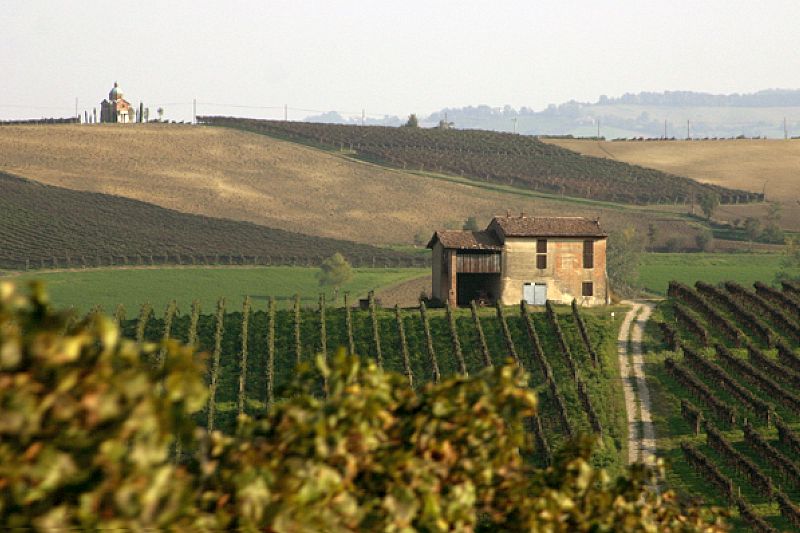
Rich in history, beauty and wine, the Veneto offers a wide breadth of grapes and styles due to its numerous microclimates – with the Alps in the north, Lake Garda to the west and the Adraitic Sea to its southeast. Though the Veneto produces many storied wines, the volume of Pinot Grigio and the global demand for Prosecco have made it famous, of which great versions of the latter come from Conegliano Valdobbiadene DOCG and Cartizze DOCG.
The red wines of Valpolicella DOC and Amarone della Valpolicella DOCG are both based largely on black grape Corvina, as are the rosé and red wines of Bardolino DOC. East of Verona, Garganega is the main white grape in Soave DOC, while Trebbiano dominates in the white wines of Lugana DOC on the southern shores of Lake Garda.
In the far northeast corner that borders Austria and Slovenia, Friuli-Venezia Giulia’s landscape juxtaposes the Alps against the Adriatic’s coastal flatlands, and this unique climate provides the optimal conditions for a range of both red and white grapes. More than 75% of Friuli’s production is white wine, based on Pinot Grigio, Sauvignon Blanc, Ribolla Gialla and Friulano. Red wines from the region are produced using Merlot, Refosco and Schioppettino.
Along the Mediterranean between France and Tuscany, the small coastal region of Liguria largely focuses on white wines. The dry whites made from Vermentino and Pigato comprise the bulk of exports, while the key red is Rossese is found in the fruity and fragrant Dolceacqua DOC.
Located in north-central Italy, Lombardia is home to some of the country’s most beautiful lakes, and the cooling influence of the Alps make it a sparkling wine haven. Franciacorta DOCG, along Lake Iseo, is one of the premier metodo classica Italian wines, and is made using the Chardonnay, Pinot Bianco and Pinot Noir grapes. Red wines are also made in the region, using primarily the Nebbiolo grape.
Home to the spectacular Dolomite mountains, Trentino-Alto-Adige is a mashup of Italian and Austro-Hungarian influence. A unique cadre of grapes ripen in this sunny, elevated region, including, Pinot Noir, Schiava and Lagrein for red wines. For white wine, Pinot Grigio is by far the most popular grape used, however Chardonnay is also widely utilised – especially as a base for the sparkling wine from Trento DOC.
Rich in history, beauty and wine, the Veneto offers a wide breadth of grapes and styles due to its numerous microclimates – with the Alps in the north, Lake Garda to the west and the Adraitic Sea to its southeast. Though the Veneto produces many storied wines, the volume of Pinot Grigio and the global demand for Prosecco have made it famous, of which great versions of the latter come from Conegliano Valdobbiadene DOCG and Cartizze DOCG.
The red wines of Valpolicella DOC and Amarone della Valpolicella DOCG are both based largely on black grape Corvina, as are the rosé and red wines of Bardolino DOC. East of Verona, Garganega is the main white grape in Soave DOC, while Trebbiano dominates in the white wines of Lugana DOC on the southern shores of Lake Garda.
In the far northeast corner that borders Austria and Slovenia, Friuli-Venezia Giulia’s landscape juxtaposes the Alps against the Adriatic’s coastal flatlands, and this unique climate provides the optimal conditions for a range of both red and white grapes. More than 75% of Friuli’s production is white wine, based on Pinot Grigio, Sauvignon Blanc, Ribolla Gialla and Friulano. Red wines from the region are produced using Merlot, Refosco and Schioppettino.
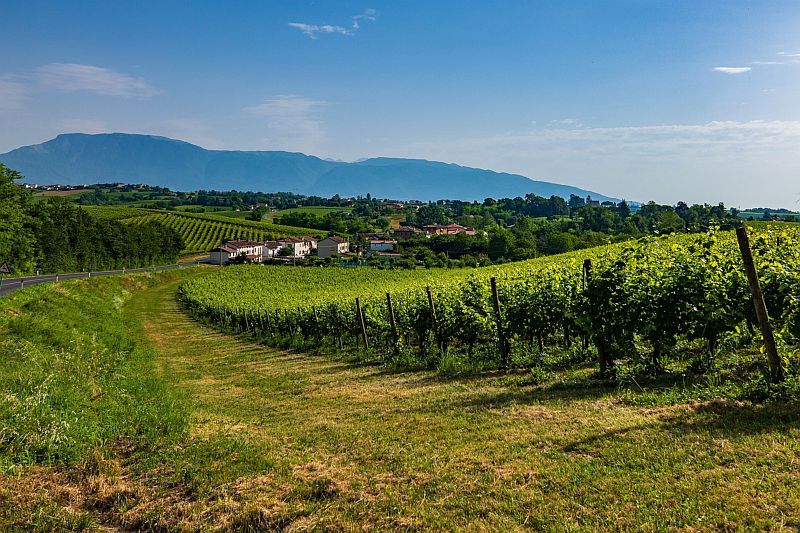
Centrally positioned along the Tyrrhenian Sea on the west-coast of Italy, Tuscany stretches inland across rolling countryside. One of Italy’s oldest wine-growing regions, Tuscany was the home of the Etruscans, an ancient culture with connections to the Phoenicians, before the rise of the Roman Empire. Most famous for its red Sangiovesebased wines are Chianti, Chianti Classico, Vino Nobile di Montepulicano and Brunello di Montalcino DOCGs.
While many wines are labelled as Toscana IGT, as they do not conform to traditional production rules, these wines can be 100% Sangiovese or with blends with international varieties such as Cabernet Sauvignon or Syrah. Tuscany’s most famous white wine is the Vernaccia di San Gimignano DOCG. In the 1980s, Tuscan winemakers discovered they could produce amazing wines with Cabernet Sauvignon, however the grape was not permitted in classic Tuscan wines such as Chianti and so they started to break the rules. The laws surrounding the correct labelling and cultivation of wine eventually changed, but the die was set and thereafter Super Tuscans were the rock stars of the Italian coast.
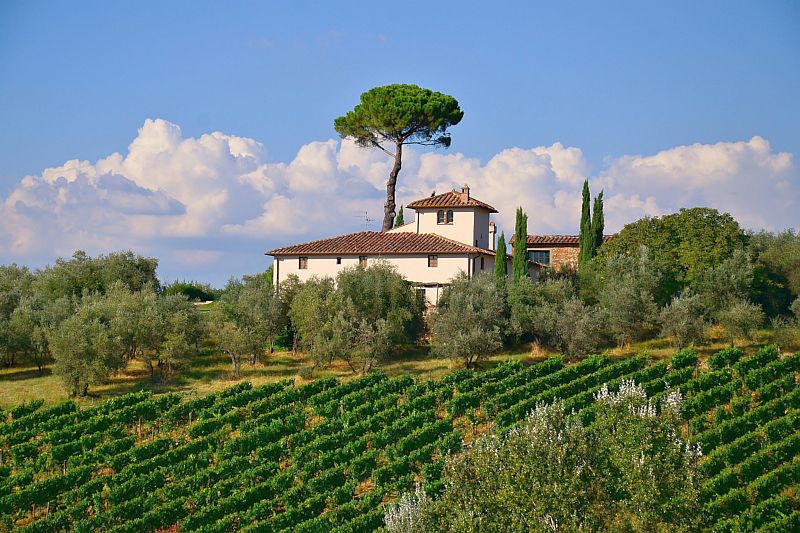
Due east from Tuscany, the small region of Umbria in eastern Italy is routinely overshadowed by its more famous neighbour. However, this hilly landscape, fringed by the snow-capped Apennines, produces tannic and age-worthy red wines from Sagrantino de Montefalco while its companion white, Grechetto, is dry, crisp and ready to be enjoyed young.
Sitting on Italy’s eastern coast, Marche is home to Rosso Cònero DOC, which is based on the black grape Montepulciano.
Home to Italy’s capital city, Rome, Lazio has a reputation for easy-drinking, youthful white wines. While great wines are made here, the top exports are dry and crisp styles from Frascati DOC and Orvieto DOC, which straddles the border with Umbria.
Below Abruzzo sits tiny Molise, a mountainous region in south-central Italy. The region is mostly known for Trebbiano and Montepulciano from the Biferno DOC.
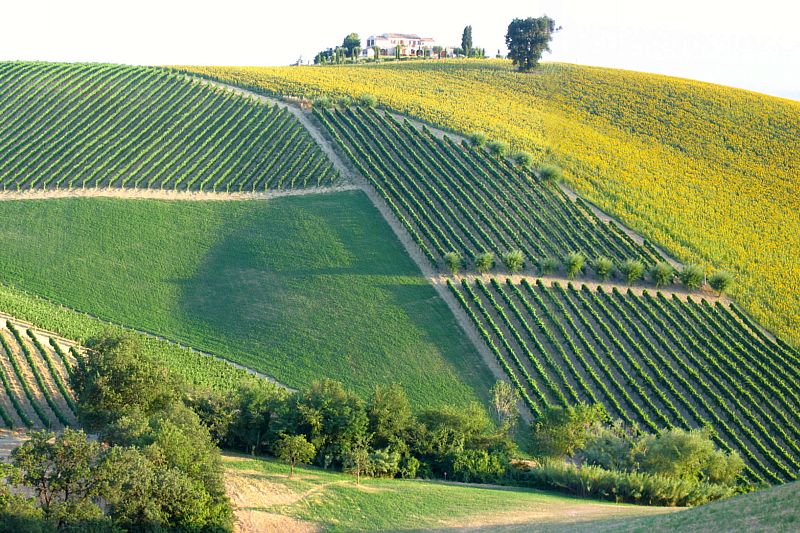
The southern region of Puglia has grown in popularity for its good-value wines based on primarily indigenous grapes. The warm Mediterranean climate lends itself ripe, fruity and robust reds based around Primitivo, also known as Zinfandel, and Negromaro. Other varieties grown in the region include Chardonnay and Bombino Bianco for white wines.
The largest island in the Mediterranean, Sicily’s dry, warm climate and copious sunshine are perfect for viticulture and produces fruity, medium-bodied red wines made from Nero d’Avola and juicy, peachy white wines made from Grillo, which are most prolific from the Sicilia DOC. In the south, Nero d’Avola is blended with Frappato for Cerasuolo di Vittoria DOCG. The red grape Nerello Mascalese and the white grape Carricante produce sought-after wines from the Etna DOC. Marsala DOC is the fortified wine from the west.
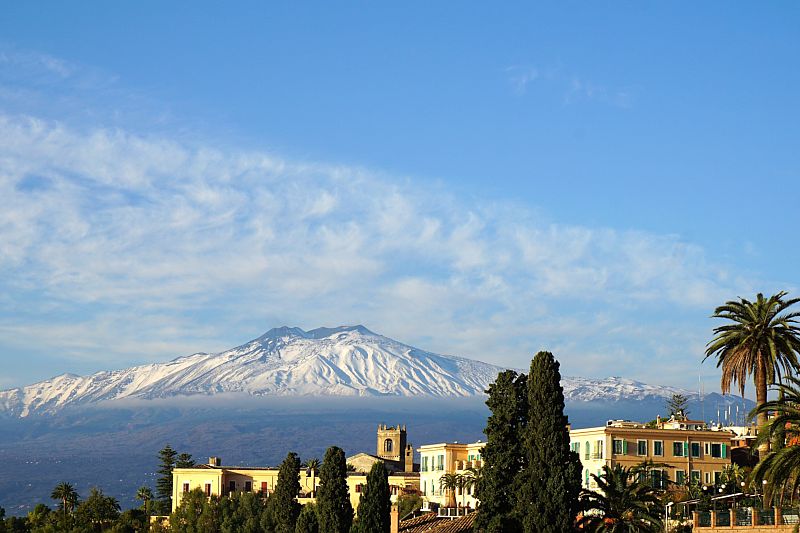
Part 3: How do you Read Italian Wine Labels?
Italian wine labels may be widely varied in how they look, however fortunately there are specific sets of information and clues that you can use to determine which wine you are looking at.
With France having been successful with its Appellation d’Origine Controlée (AOC), a wine classification system based on where and how wines are made, Italy introduced its system for classifying wines in 1963. Although the Italian DOC classification is based on the French model, it does however go one step further; not only does it specify the production area and the methods used for each wine, it also guarantees the quality of certain wines, which must pass a government taste test to qualify.
There are four main categories of Italian wine label classifications, ranging from lowest quality to highest quality:
Vino da Tavola (VdT), which translates as “table wine” is wine produced with grapes that do not necessarily come with a geographical indication. The grapes used to produce table wines can come from anywhere in Italy, but because they are rarely of high enough quality to be bottled for the European market or export to the US, these wines are generally consumed locally.
The broadest category of Italian wines is Indicazione Geografica Tipica (IGT). All grapes in IGT wines should come from the IGT region stated on the label, but otherwise the wines do not have to conform to strict standards regarding the style of wine. Wines in the IGT category are often, but not always, of lower quality than DOC wines.

Some producers of high quality, non-traditional wines, like the makers of some ‘Supertuscans’, may release their wines under the IGT classification when they do not wish to adhere to the strict DOC or DOCG restrictions.
The next highest quality level is Denominazione di Origine Controllata (DOC), which means “designation of controlled origin.” There are 329 different DOCs in Italy, which cover many types of wine, from the sparkling wines of Prosecco, to the Vin Santo dessert wines of Tuscany, to a wide range of red and white wines across the country. Each DOC has its own rules about permitted grape varieties, maximum harvest yields, and aging requirements.
Denominazione di Origine Controllata e Garantita (DOCG), is the highest quality level. The DOCG designation was created in 1980 in response to criticisms that there were too many DOCs and their quality was variable. DOCG wines, in contrast, were to be truly the best of what Italian wines could offer. The first DOCG wines were Barolo and Barbaresco, both red wines made from the Nebbiolo grape in Piedmont; and Brunello di Montalcino and Vino Nobile di Montepulciano, both red wines made from the sangiovese grape in Tuscany. There are now 74 DOCG wines in Italy, most of them concentrated in the regions of Piemonte, Tuscany, and the Veneto.
Aside from DOC or DOCG status, there are a few important words you may also see on Italian wine labels that indicate wine quality.
Classico can be added after the appellation name for wines that are made in the historic centre of a wine producing region, for example Chianti Classico or Valpolicella Classico.
Superiore means that a wine has at least 0.5% higher alcohol content than the regular wine from a certain region, and also adheres to limits regarding harvesting and minimum aging.
Wines labeled Riserva will have aged even longer, for at least two years. These label classifications and statuses help consumers understand the quality of the wine they are buying and where it came from, and Italian wine labels can be generally classed into one of three categories – by grape variety, by region or by name.
Reading an Italian Wine Label by Grape Variety
Bardolino di Timoneria, this is ‘Vino Nobile di Montepulciano’ This can be identified through the region named on the bottle. The region, or subregion, will always be located next to the classification level (DOC, DOCG, IGT etc).
Whenever a grape variety is mentioned, it is usually named in association with a region. In the instance of Bardolino di Timoneria, this is probably a grape variety because it is “Bardolino” of “Timoneria”.
There are a few instances, such as where ‘Vino Nobile’ is a synonym of Sangiovese. However, most of the time, if you see a “di” or a “d’ ” the name probably refers to a grape.
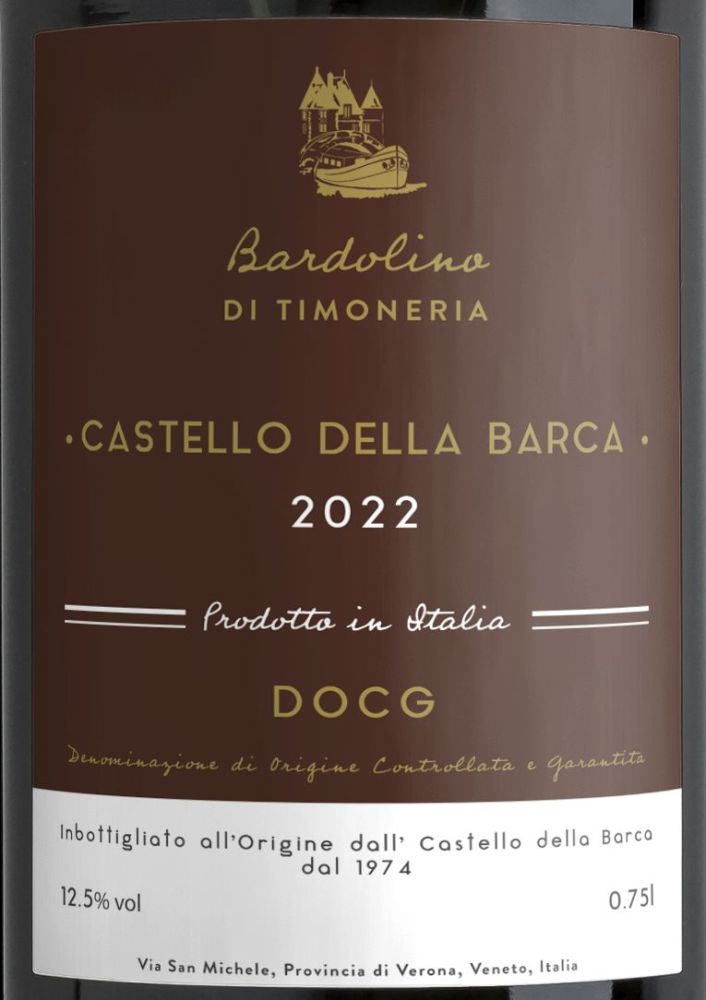
Reading an Italian Wine Label by Region
If the region is listed on the label, you will always see a classification after the region’s name.
For instance, a bottle named by region/sub-region might say Soave with the words “Denominazione di Origine Controllata” next to it.
In this case, the wine is relying on the classification to tell the consumer what is inside, since according to DOC rules Soave must contain at least 70% Garganega and can contain up to 30% of Trebbiano di Soave or Chardonnay.
As the regional names cover larges areas, the classifications become less strict and the wines are usually a blend of the most popular grapes from the region.
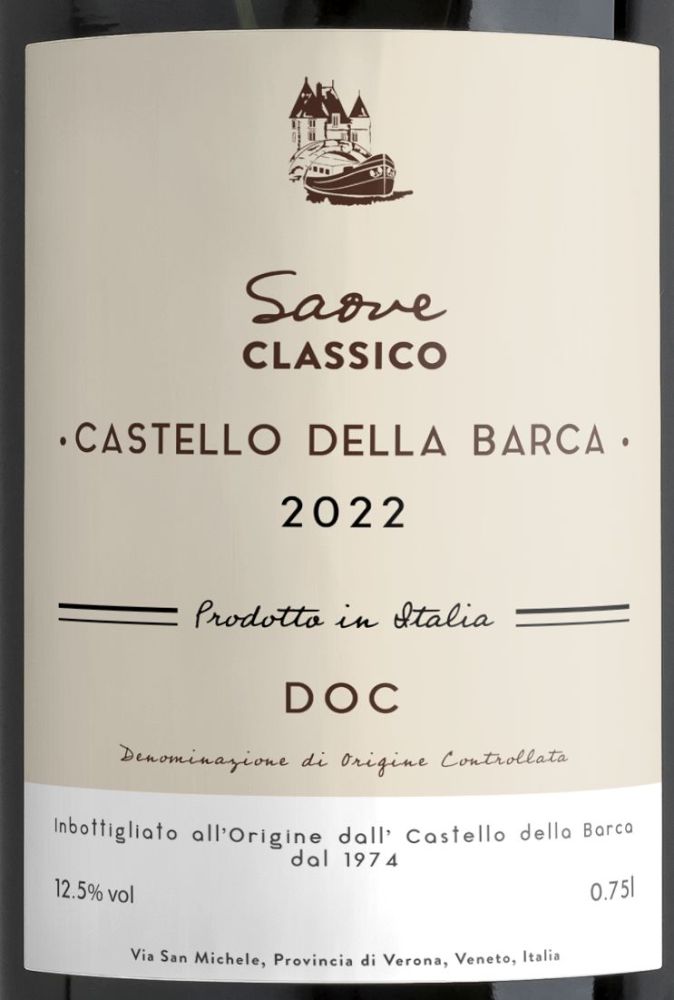
Reading an Italian Wine Label by Name
Italian wineries will often use words such as Tenuta, Azienda, Castello or Cascina in their name.
One can always tell if it is a named wine by the location of the name on the label. Named wines never appear next to the wine’s classification, the most common of which on named wines is IGT.
This means that producers can use both Italian and non-Italian origin grapes in their wines, such as Merlot or Cabernet Sauvignon. Some named wines have additional names on the label, which may be located next to the classification level. This means that the wine would fall under the requirements of its regional name and, in some cases, is a blend of that region’s most planted grapes.
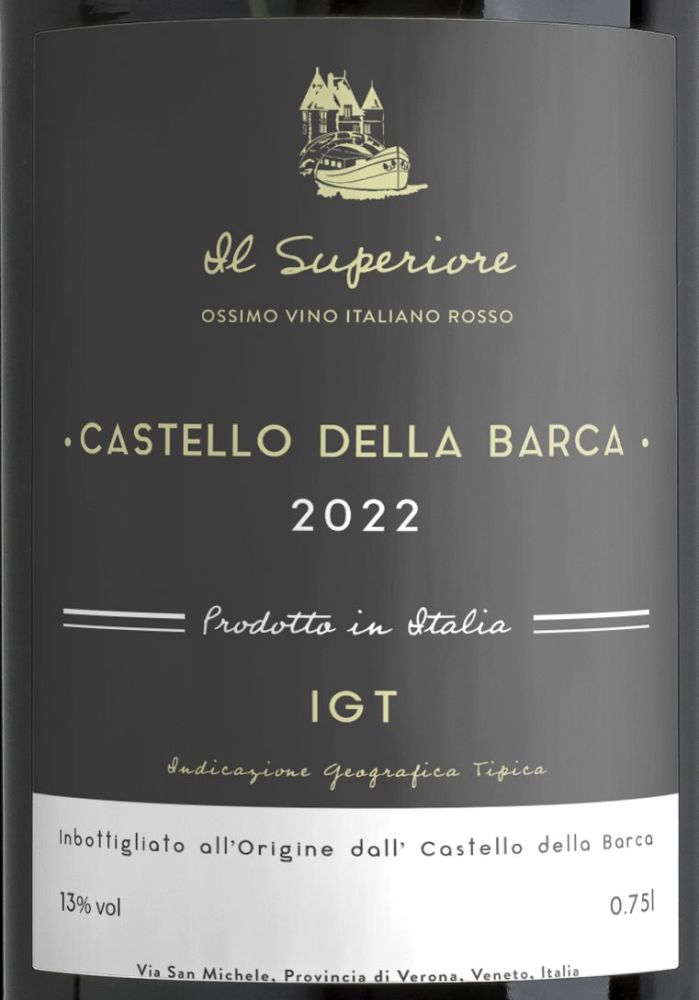
Italy’s sparkling wines on the other hand, which include Prosecco, Spumante and Frizzante, use a slightly different set of rules. While it is not necessary to include the DOC or DOCG ruling on the label itself, the classification used must be included somewhere on the bottle. This is usually achieved by a thin band of paper with the winery’s credentials and the DOCG classification applied to the neck of the bottle.
The band is placed not only to determine the classification of the wine, but also to certify the authenticity of the product. The band contains, amongst others, the emblem of the state in which the wine was produced, the initials of the classification – either DOC or DOCG, and a unique serial number and alphanumeric code.
A QR Code is also included on the strip that allows the consumer to verify the authenticity of the bottle using their smartphone. On the back of the bottle, the label must include the words “Prosecco” followed by either “DOC” or “DOCG” and the certification of origin in Italy – “Product of Italy” in any language.

Ready to Explore Italy by Luxury Barge?
For more information on our cruises in Italy and the rest of our collection of luxury hotel barge cruises, why not order a free copy of our brochure today or speak to a member of our team directly using our handy Contact Form.
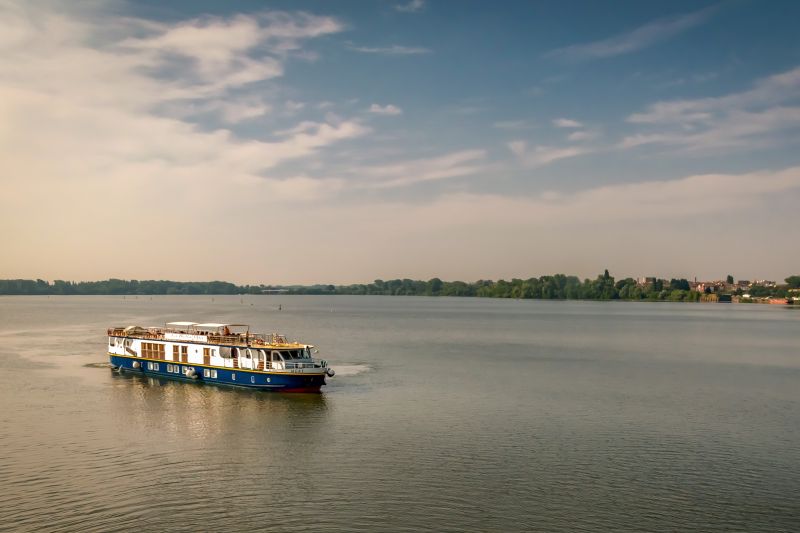
 Italian
Italian
 English
English Spanish
Spanish French
French German
German Norwegian
Norwegian Portuguese
Portuguese Swedish
Swedish Russian
Russian Simplified Chinese
Simplified Chinese Japanese
Japanese